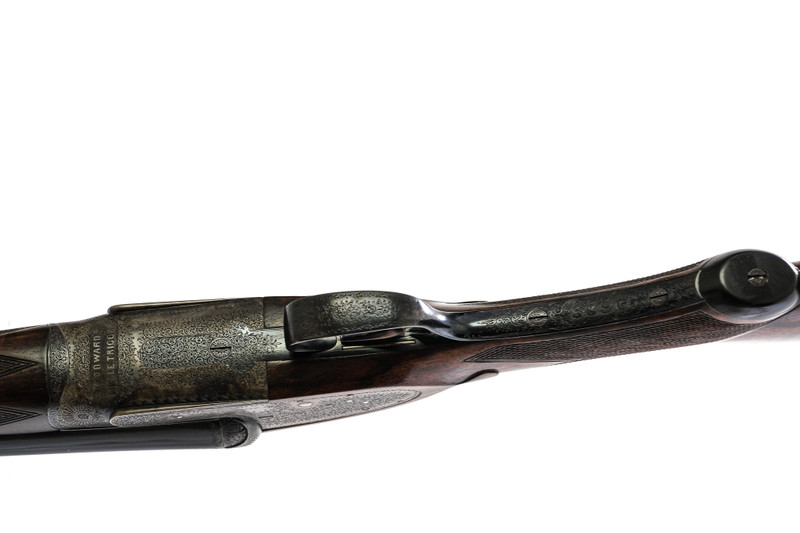Major Malet Peyton Phelps was born in 1869 to Lieutenant General Arthur Phelps of Edgbaston, Birmingham. Lieutenant General Arthur Phelps had a distinguished military career, including serving under Lord Ripon.

Malet Peyton Phelps followed in his father's footsteps and in his own right, had a distinguished military career serving as the Senior Major, the second-most senior officer, in the Sherwood Foresters 1st Battalion in 1911. During the outbreak of World War I, through various reorganizations, the Sherwood Foresters could be found on the Western Front, Malta, and Egypt. Fortunately, Major Malet Peyton Phelps survived the great war and lived until 1951, when he passed away at the age of 82.

Malet Peyton Phelps visited the well-established James Woodward and Sons workshop on Bury Street in the west end around 1910, where William Potter Evershed would have greeted him. As a result, Major Phelps ordered a matched pair of cased Woodward and Sons 12 gauge shotguns with 28" barrels and single triggers. To be more precise, guns with matching serial numbers 5,896 and 5,897.

The full coverage scroll engraving on these guns most likely would have been executed by Sumner, and the options that Major Phelps chose, even by today's standards, are timeless and just perfect for a pair of modern-day game guns. All of the features that one would expect to find in any "best" shotgun of any era are present in this matched pair of quintessential shotguns. For example, horn-capped long tang Prince of Wales grips, drop points, sequential serial numbers, 1 & 2 in gold, and the fabulous Wooward arcaded fences!

Like Boss, James Woodward only produced "best" shotguns, and after the Second World War, Woodward found it challenging to maintain a viable business. In the end, the gunmaker was sold to James Purdey & Sons in 1948.
